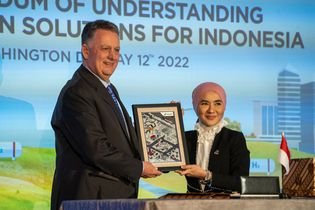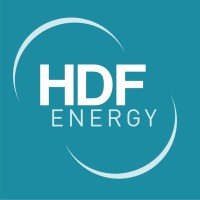Chevron and Pertamina partner on lower carbon hydrogen
As Indonesia’s largest state-owned energy company, Pertamina remains committed to accelerating the energy transition per the government’s targets.

Chevron Corporation (through its subsidiary Chevron New Ventures Pte. Ltd) and Indonesia’s PT Pertamina (Persero) have partnered to explore potential lower carbon business opportunities in Indonesia.
Aimed at serving local and potentially regional customers, Chevron and Pertamina plan to consider novel geothermal technologies; carbon offsets through nature-based solutions; carbon capture, utilization, and storage (CCUS), and lower carbon hydrogen development production, storage, and transport.
The partnership between Chevron and Pertamina is part of efforts from both companies to support the Government of Indonesia’s net-zero emission target in 2060. Pertamina is committed to increasing its renewable energy mix from 9.2% in 2019 to 17.7% in 2030.
Jeff Gustavson, President of Chevron New Energies, said, “Through our potential work in Indonesia and the entire Asia Pacific region, we hope to provide affordable, reliable, ever-cleaner energy, and help the industries and customers who use our products advance their lower carbon goals.”
President Director & CEO of Pertamina Nicke Widyawati, said, “This partnership is a strategic step for Pertamina and Chevron to complement each other’s strengths and develop lower-carbon energy projects and solutions to promote energy independence and domestic energy security.”
Indonesia, as the second-largest country with geothermal installed capacity, has developed geothermal since 1974. Currently, Pertamina, through its Subholding Power & NRE, has a total installed geothermal capacity of 1,877 megawatts (MW) originating from 13 geothermal work areas, of which 672 MW come from work areas that are operated independently, and 1,205 are joint operation contracts (JOC). The independently operated work area with a total capacity of 672 MW includes Sibayak Area at 12 MW, Lumut Balai Area at 55 MW, Ulubelu Area at 220 MW, Kamojang Area at 235 MW, Karaha Area at 30 MW, and Lahendong Area at 120 MW.
In addition, Pertamina is also diversifying geothermal development; an ongoing green hydrogen pilot project, among others, is being developed in the Ulubelu Area with a production target of 100 kg per day, and brines to power which is being developed in the Lahendong Area and has a potential capacity of 200 MW out of several other work areas.
In collaboration with various parties, Pertamina is also developing the implementation of Carbon Capture and Storage (CCS) and Carbon Capture, Utilization, and Storage (CCUS) as one of the company’s strategies to reduce carbon emissions in two oil and gas fields namely Gundih and Sukowati. Pertamina is also reviewing the commercialization of the application of CCUS technology in the Sumatra region.
